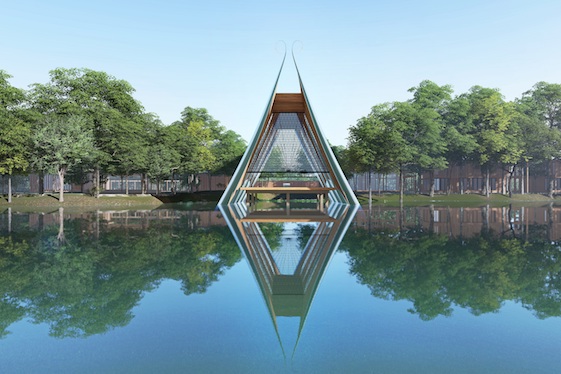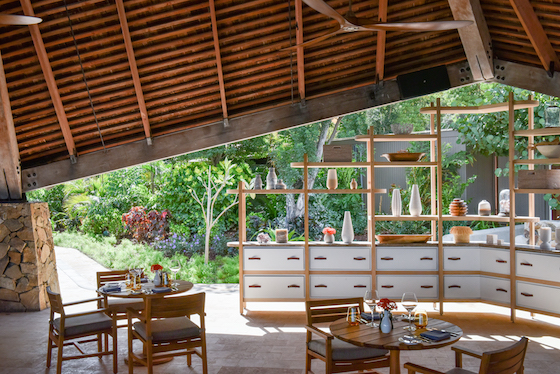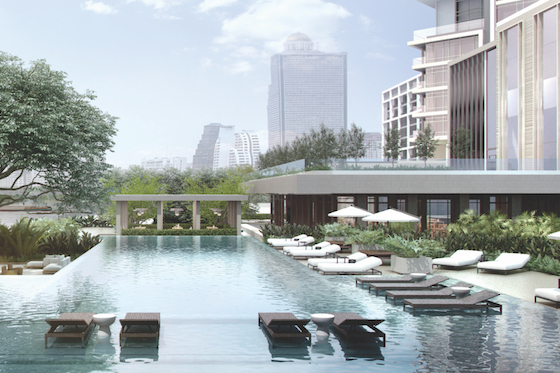As hotels learn to co-exist with the coronavirus, every aspect of operations is being deconstructed and reconsidered as conventional procedures are created to not only welcome guests and promote their wellbeing, but keep them safe and healthy.
Hospitality designers are rethinking their approaches as well, with imaginative solutions that are clever, not clinical, and spatial layouts that help physical distancing avoid feeling anti-social. Their challenge: Deliver the human touch – without, necessarily, the touch of a human. HOTELS spoke with designers and experts Sue Harmsworth, Will Meyer and Gray Davis, and Jean-Michel Gathy to find out how they are innovating to help their hospitality clients adapt to new realities and priorities wrought by the global pandemic.
Contributed by Alicia Sheber

Sue Harmsworth, MBE, founder of ESPA, has designed more than 500 spas in 65 countries. Now an adviser, one of her current projects is Tri Vananda, a wellness resort opening in 2022 in Thailand, for Montara Group. What she said:
“Hospitality, spa and clinical industries will merge as integrative medicine and prevention become increasingly important. Trust will be enormous as people grow aware they can’t rely on medical systems and need to take ownership of their health…
“Everything I’m designing addresses the wellbeing of buildings as much as individuals through things like sustainable materials; deflecting electromagnetic fields; considering circadian rhythms with lighting; acoustics; and air quality with open windows instead of air conditioning where possible.
“There may be demand for shorter treatments for the time being. Infrared saunas are proven to build immune systems, hyperbaric training for lungs doesn’t require physical touch, and clothed treatments like Thai or Shiatsu massage can happen face-down. Vibrations are very powerful, so music and sound from gongs and crystal and singing bowls can be added, as well as light therapy and anything to do with circadian rhythms and electromagnetic fields. Halotherapy respiration suites with Himalayan salt walls to strength lungs and the immune system will be sought.”

Will Meyer and Gray Davis, founders of Meyer Davis, New York City, have designed hotels including Four Seasons in Papagayo, Costa Rica; 1 Hotel Miami; and Rosewood Little Dix Bay, which opened in January. What they said:
“Our clients are asking us to consider if things can be slightly different without looking unusual, for example, making glass privacy panels between banquettes, which we would have designed anyway, higher. But while we’re trying to be predictive, we also don’t want to overreact and design something that looks entirely different and feels uncomfortable. People dining or working out in glass bubbles won’t become commonplace. Clever designers will figure out smart and witty solutions that just feel right.”

Jean-Michel Gathy, founder of architecture practice Denniston, Kuala Lumpur, has designed multiple Aman Resorts, including the Aman New York opening this winter, and destinations such as Marina Bay Sands, Singapore.
“I’m not worried about open lobbies. It’s the airports and planes required to reach them. Hotels with shared spaces won’t change fundamentally, but the rules will adjust as new products are created. The buffet will either disappear, have a sneeze guard, or be served by waiters inside the station. Receptionists will be behind glass. Lifts will hold four people instead of 15, but they’ll be faster. Door handles, taps and drinking glasses will be made from materials the virus can’t attach to. There will be new water filtration methods, and one AC system per floor instead of per building. To accommodate reduced capacity, hotels will have three smaller restaurants instead of a larger one.”
